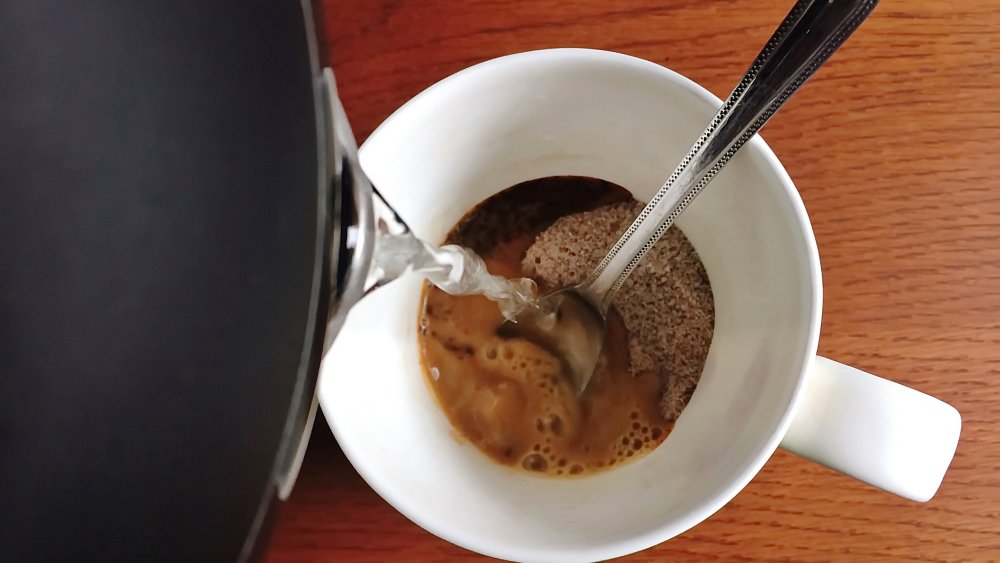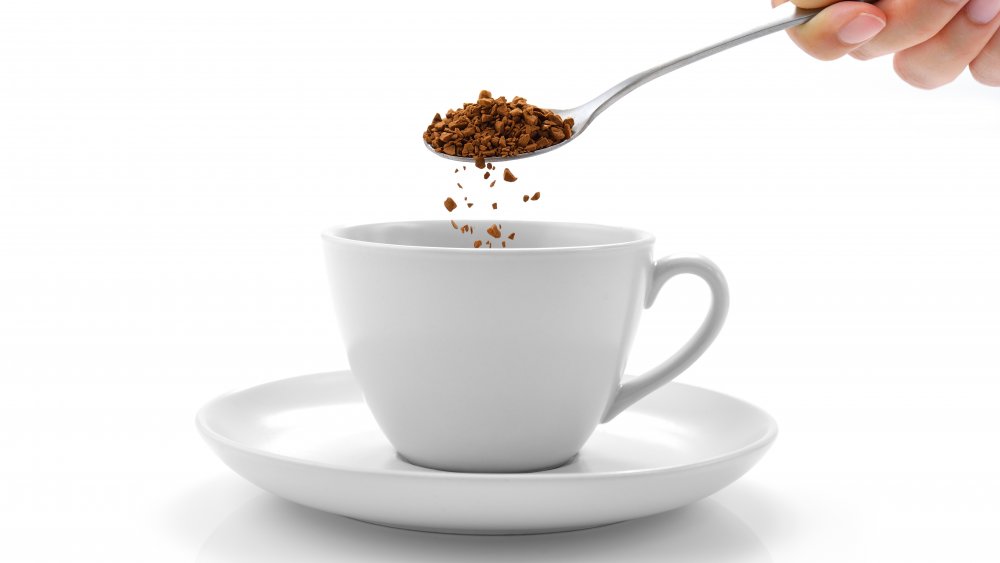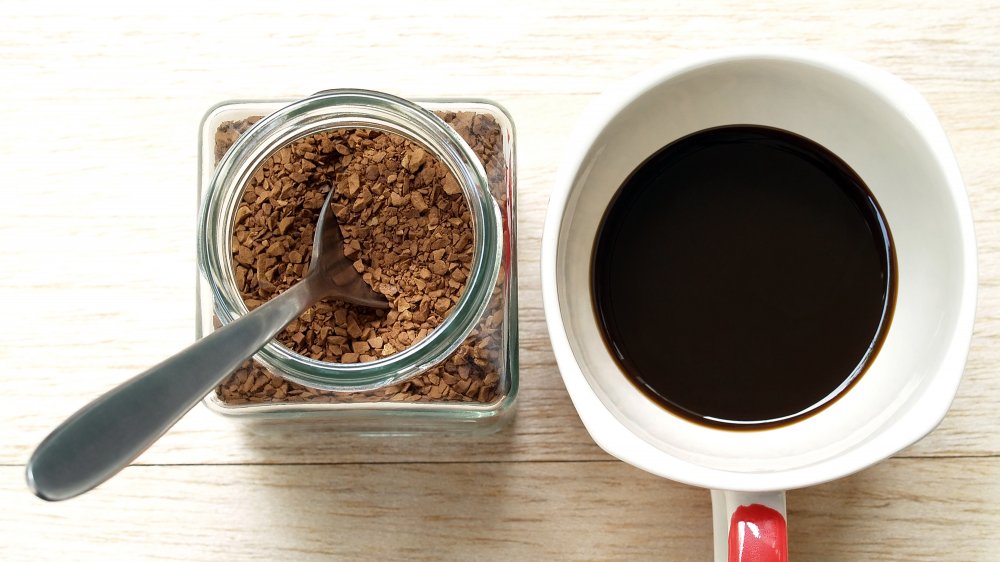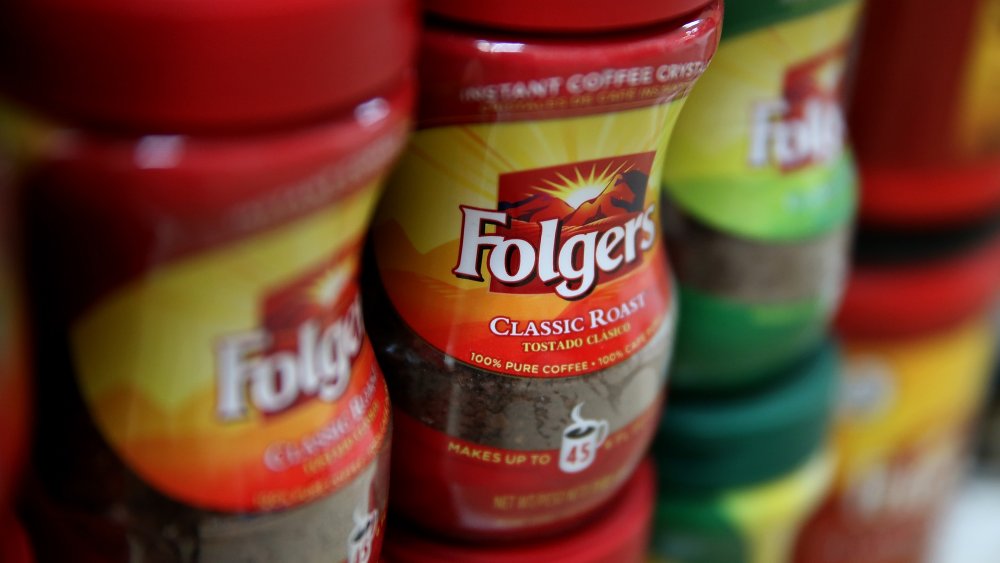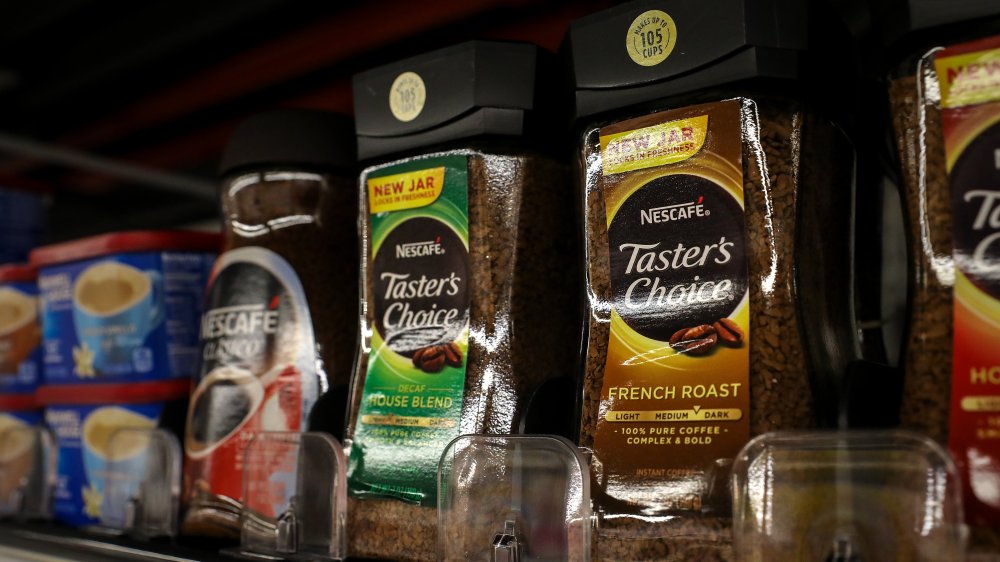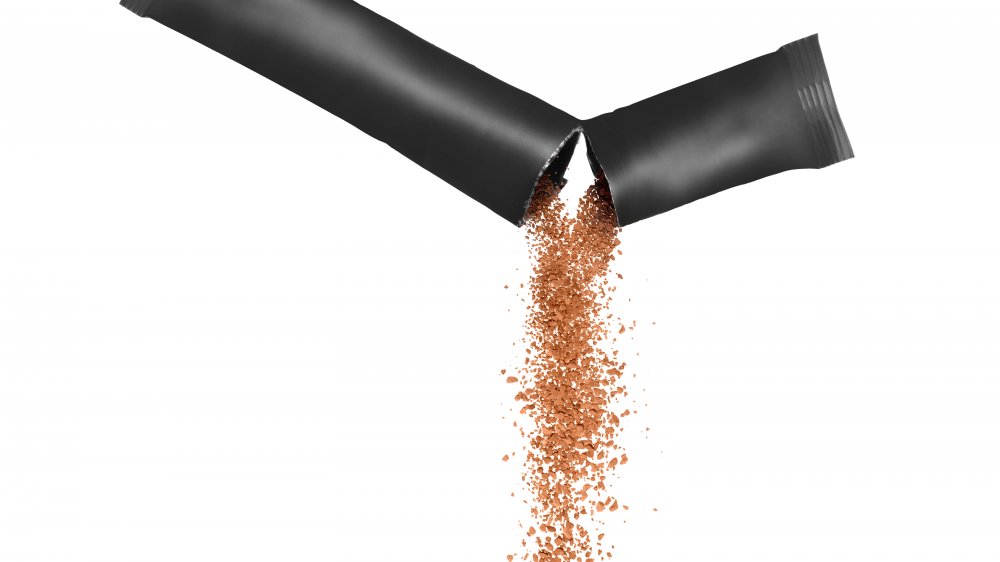The Untold Truth Of Instant Coffee
Instant coffee is a controversial choice among coffee aficionados, as many look at it as fake or weak coffee. It does have a convenience factor, though, which some companies have used to market higher-end coffees, such as Starbucks. But what is the essential difference between instant coffee and coffee made from whole beans? And what exactly is instant coffee, anyway?
Making instant coffee is faster, less expensive, and easier than making regular coffee. It is made by adding the powder to hot water, similar to making instant tea. Instant coffee is made from whole coffee beans that are roasted, ground, and brewed. Then all of the water is removed from the brewed coffee, leaving dehydrated crystals. When you add water to these crystals, it turns back into coffee (via HuffPost).
How instant coffee is made
The production of instant coffee is done through either a spray-drying process or a freeze-drying process. Spray drying is a process where liquid coffee concentrate is sprayed as a fine mist into hot air, approximately 480 degrees Fahrenheit. When the coffee hits the ground, it will have dried into small crystals, as the water will have evaporated.
Freeze drying is slightly more involved. The coffee is cooked down into an extract, which is then chilled at approximately 20 degrees Fahrenheit until it becomes essentially a coffee slushy. The slushy mixture is then further chilled using a belt, drum, or tray at a temperature of -40 degrees Fahrenheit. This causes it to form slabs of frozen coffee that are then broken down into granules, which are sent to a drying vacuum where the ice is vaporized, leaving behind granules of instant coffee.
How instant coffee compares in the caffeine department
There is less caffeine in instant coffee than regular, which may be a benefit for those looking to reduce their consumption. One cup of instant coffee contains between 30 and 90 milligrams of caffeine compared to regular coffee, which contains between 70 and 140 mg.
A potential downside of instant coffee is the chemical composition. It contains acrylamide, a potentially harmful chemical that forms when coffee beans are roasted. Instant coffee may contain up to twice as much of the chemical as regular coffee. It has the potential to damage the nervous system and increase the risk of cancer if high levels are consumed (via MSN). However, the amount of acrylamide in coffee is below the amount shown to be harmful in studies.
The early versions of instant coffee
The first versions of instant coffee date back to 1771, according to Mark Pendergast in The Oxford Companion to American Food and Drink. This was approximately 200 years after coffee was introduced to Europe, and Great Britain had granted a patent for a "coffee compound" to John Dring (via Smithsonian Magazine).
Then, in the late 19th century, a firm in Glasgow invented a product called Camp Coffee, which was a liquid "essence" made of water, sugar, coffee essence, and chicory. As a consumer product, a version of Camp Coffee hit the retail market in Great Britain in the mid-to-late 1800s.
In the United States, the earliest recorded instant coffee happened during the Civil War with soldiers looking for ways to increase their energy that were also easy to carry.
Around the mid-1800s in San Francisco, James Folger and his sons started a more familiar coffee company. Folger's sold the first canned ground beans that didn't have to be roasted and ground at home, something that made coffee drinking quite a chore, in an attempt to lure miners during the Gold Rush.
Instant coffee becomes available commercially
The company then became one of the two most popular coffee brands in the United States. The second one was Maxwell House. While neither company would introduce instant coffee until after World War II, they paved the way with their ground coffee bean blends that made it significantly more convenient to make coffee.
In 1906, Cyrus Blanke brought coffee powder to the retail market. In 1910, a European immigrant named George Washington (not that one) refined coffee crystals from brewed coffee and introduced the first commercial instant coffee in the United States, which then became popular during World War I for its convenience.
The next major improvement in instant coffee came in 1938 when Nestle launched Nescafe. It was created by spraying liquid coffee into heated towers. The remains became coffee when rehydrated. It is still one of the most popular instant coffee products on the market. In 2012, Nescafe made up 74 percent of the instant coffee market.
Instant coffee retains many of the health benefits associated with regular coffee. It contains many antioxidants, potentially even more than regular coffee due to the brewing process (via Healthline). Studies show it also may contribute to improved brain function and increased metabolism. Coffee drinkers are also less likely to develop certain neurodegenerative diseases, such as Alzheimer's and Parkinson's, and are at less risk of diabetes and liver diseases such as cirrhosis and liver cancer.
The popularity of instant coffee globally
The market for instant coffee is expanding globally — and exponentially in China. Previously, China was known to drink approximately two cups of coffee per year per person (in other words, the amount most people drink before lunch), and is now the fourth largest market for instant coffee, also known as ready to drink (RTD) coffee.
Russia is also an emerging coffee market. Instant coffee is an affordable entry point into the beverage, which can be expensive to purchase in whole bean form. The RTD coffee industry is rooted in the United Kingdom, which has consumed instant coffee for decades.
Whether or not you like instant coffee, it is real coffee and definitely more convenient than brewing coffee from whole beans.
